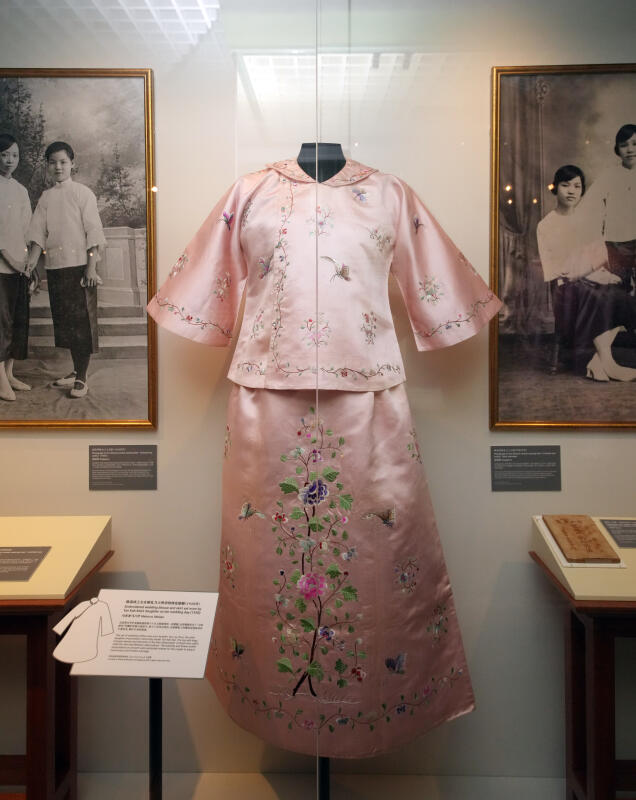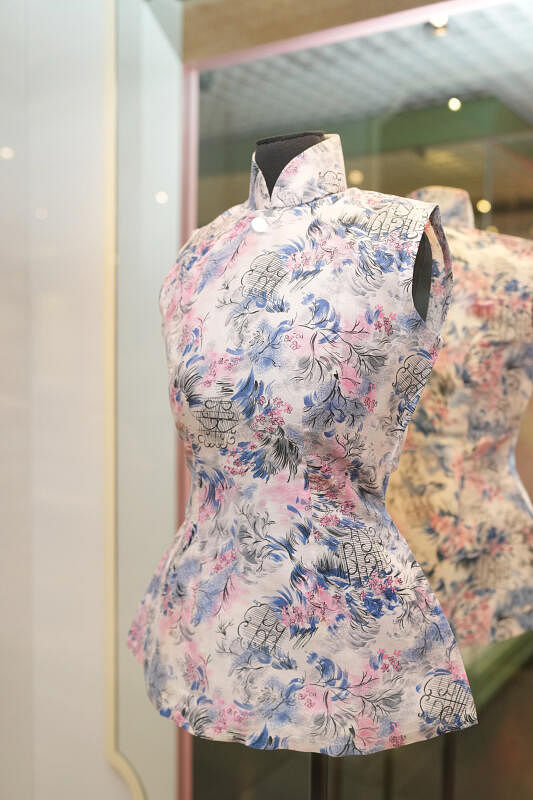SINGAPORE - Enter this Sun Yat Sen Nanyang Memorial Hall exhibition and visitors will first see an opulent Qing Dynasty ao, or blouse-jacket.
It is loose-fitting and long, almost negating the wearer. The individual is less important than the embroidered symbols on the garment, mostly squirrels and grapes, which signify fertility.
Compare this with a beige, cinched-waist dress found in Singapore in the 1970s, also on display. With its A-line skirt, it flatters the woman's figure and accentuates her femininity.
While elegantly speaking to Western influence on Asian women's clothes - the design can be traced back to Christian Dior in 1947 - it also attests to contemporary women's need to be mobile.
Unlike their predecessors, they were no longer primarily confined to the home.
Such comparisons will be available at the Sun Yat Sen Nanyang Memorial Hall from Saturday (June 12), as its latest special exhibition, Modern Women Of The Republic: Fashion And Change In China And Singapore, seeks to trace "the rise of the modern woman" through clothes.
Close to 100 artefacts, including 13 impressive garments, many sourced from private collectors, will be on display.
The exhibition covers the period between the 1890s and 1970s, and is for anyone who is interested in fashion or history.
"Fashion, besides being a form of self-expression, is often a reflection of the times," said the museum's assistant curator, Ms Tan Yan Ni.
"This is why we chose fashion as a medium to tap into broader conversations, to discuss how women's contributions are integral to the political, social and economic development of a society.
"We hope to spark more discussions among Singaporeans about what constitutes a modern woman today."

Quite a chunk of the exhibition is given over to an exploration of the cheongsam, itself a reaction against the Qing Dynasty aos.
Slender and tight-fitting, it was seen as a more modernised style of dress for the "civilised woman".
The variety of cheongsams on display makes clear, however, that there was no one cheongsam, with tailors and women adapting collars, buttons and seams to suit their shifting tastes and occupations.

Photos taken in the 1920s show women in China wearing heels - a Western import - with high-slit cheongsams.
Some posed for the photos without looking at the camera, or on horseback, injecting a sense of fun - and agency - into previously dull portraits.
Three cheongsams found in Singapore reveal how women here adapted the Chinese garment.
One green, sleeveless cheongsam with a matching lace jacket is reminiscent of the Malay kebaya. Another uses batik, a South-east Asian fabric, pairing it with a Western-style cropped jacket.
But the curators also included a section on Shanghai posters and fashion magazine covers, showing how models and actresses gradually became fashion icons rather than mere commodified accessories to sell products.
A section profiling Ms Teo Soon Kim, the first female lawyer to win a case in the Singapore Supreme Court, in 1932, drives home the feminist message, writing women into a historically male-dominated profession.
The Sun Yat Sen Nanyang Memorial Hall said the period covered by the exhibition is particularly interesting as there were great political and social upheavals then.

For instance, the binding of feet and breasts was abolished, while female education developed, letting more women into the workplace.
To increase the novelty factor of the exhibition, the museum has also teamed up with Swiss perfumery Givaudan to create a scent, named Osmanthus Breeze, that will permeate the venue.
It should smell like the cosmetic products used by the older generation and be particularly evocative for them, the museum added.
A mobile function has also been developed so people can take a selfie and have their photo superimposed on vintage Shanghai posters, which they can then share on social media.
The exhibition will be open from 10am to 5pm from Tuesdays to Sundays. Admission is free for Singaporeans and permanent residents.


